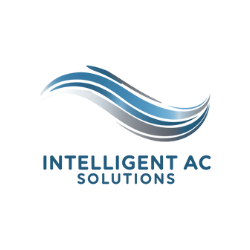Refrigerant recycling refers to the process of recovering and reusing refrigerants from air conditioning units during maintenance, repair, or decommissioning. This practice is essential in the HVAC (Heating, Ventilation, and Air Conditioning) industry, as it helps to minimize environmental impact and conserve valuable resources. Refrigerants are chemicals used in air conditioning systems to absorb and release heat, allowing for temperature control. However, many refrigerants can be harmful to the ozone layer and contribute to global warming if released into the atmosphere. One way to further reduce the environmental impact of refrigerant use is to incorporate heat recovery systems into HVAC units. These systems capture and utilize waste heat from air conditioning processes, providing additional energy efficiency and reducing the need for supplementary heating. By implementing both refrigerant recycling and heat recovery systems, HVAC professionals can play a crucial role in minimizing the industry’s environmental footprint.
During the refrigerant recycling process, technicians carefully extract the refrigerant from the system using specialized equipment. This ensures that the refrigerant is not vented into the air, which is both illegal and environmentally damaging. Once collected, the refrigerant is cleaned and purified to remove any contaminants. After this, it can be reused in other air conditioning systems or stored for future use. This not only reduces waste but also lowers the demand for new refrigerant production, which can be costly and resource-intensive.
Refrigerant recycling is governed by strict regulations to ensure safety and environmental protection. Technicians must be certified to handle refrigerants and follow proper procedures for recovery and recycling. By promoting refrigerant recycling, the HVAC industry plays a vital role in sustainability efforts, helping to protect the environment while maintaining efficient cooling systems. Overall, refrigerant recycling is a crucial practice that supports both ecological responsibility and economic efficiency in air conditioning unit installation and maintenance.
Common Mechanisms
Refrigerant recycling is an essential process in the maintenance and installation of air conditioning units. It involves the recovery, purification, and reuse of refrigerants, which are vital for the cooling process. The first step in refrigerant recycling is recovery, where technicians use specialized equipment to extract refrigerant from the air conditioning system. This is crucial because releasing refrigerants into the atmosphere can harm the environment.
Once the refrigerant is recovered, it undergoes purification. This process removes contaminants and moisture that may have entered the refrigerant during its use. Purification is vital to ensure that the refrigerant meets the necessary standards for reuse. After purification, the refrigerant can be recharged back into the air conditioning unit. This step not only saves money but also reduces the demand for new refrigerants, which can be costly and environmentally damaging to produce.
Another important aspect of refrigerant recycling is regulatory compliance. Technicians must follow local and federal regulations regarding refrigerant handling and disposal. This ensures that the recycling process is safe and environmentally friendly. By reusing refrigerants, air conditioning professionals contribute to sustainability efforts while providing effective cooling solutions for their clients.
In summary, refrigerant recycling is a critical mechanism in the air conditioning industry, promoting environmental responsibility and cost-effectiveness.
Related Factors
Refrigerant Recycling: This process involves the recovery and purification of refrigerants from air conditioning units. It is essential for reducing environmental impact and conserving resources. Refrigerant recycling helps prevent harmful substances from entering the atmosphere, which can contribute to ozone depletion and climate change.
Reusing Refrigerant: After refrigerants are recycled, they can be reused in other air conditioning systems. This practice not only saves money but also minimizes waste. Reusing refrigerants is a sustainable approach that supports the circular economy by extending the life cycle of these materials.
Recovery Equipment: Specialized tools are required to recover refrigerants from air conditioning units. This equipment ensures that refrigerants are safely extracted and stored for recycling. Proper recovery equipment is crucial for compliance with environmental regulations and for protecting the technician’s safety.
Environmental Regulations: Various laws govern the handling and disposal of refrigerants. These regulations aim to minimize the release of harmful substances into the environment. Understanding these regulations is vital for HVAC professionals to ensure compliance and promote responsible refrigerant management.
Certification Programs: Technicians must often complete certification programs to handle refrigerants legally. These programs educate professionals on safe practices, environmental impacts, and the importance of refrigerant recycling. Certification ensures that technicians are knowledgeable about the latest regulations and technologies in the field.
